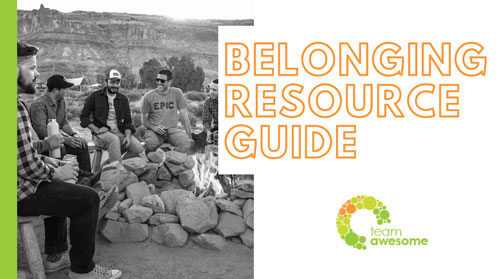In all of the engagement surveys I have seen or cultural feedback I have gathered in organizations, the insights can generally be distilled to some key, simple drivers. It’s not that other factors aren’t important or don’t pop up (a sudden safety issue, for example, will show up), but in normal conditions our teams’ feedback tends to point in the same direction: Communication, recognition, and rewarding and meaningful work.
In the previous posts of this three-part blog series, we explored accountability and the leader. Without a doubt, those are two critical factors that affect an organization’s culture. But if you were to look at the most common gaps that our teams describe, it leads back to the “Big Three.”
The Big Three
- Communication
- Recognition
- Rewarding and meaningful work
Communication
Feedback around communication can be tricky, so it is critical to understand what the real issue is. Engagement surveys are frequently worded too generally to truly get to the heart of the communication problem, which can be gleaned from open unfiltered feedback during in-person feedback sessions. When your team says they want better communication, do they mean that they don’t know critical information to do their job? Or do they mean they don’t know what is happening in the rest of the company and feel disconnected? Or, do they object to the disrespectful way their leader communicates with them? As you can see, it is critical to know what the real problem is in order to find the right solution and create meaningful change.
Solutions need to be drastically different depending on the true problem (or sometimes combination of problems). For example, if a team doesn’t like how their leader communicates with them, then a corporate internal communication plan will be barely effective. However, that is a great solution for groups that feel like they are disconnected from the happenings of the company. And for the record, I have never ever seen a feedback survey that said communication, in one form or another, didn’t need work. Ever.
Recognition
I still hear leaders frequently relating this back to money. Let’s suspend judgement on this and assume it is Not. About. The. Money. Yes, equitable and competitive pay are critical practices to have, so here we assume that those systems are in place and take accountability for the next step.
A common theme is teams wishing they had more “hello,” “goodbye,” and “thank you” from their leader. Not bonuses, money, or awards. Hello, goodbye, and thank you. This is so simple, but not always easy, because this requires a behavioral change on the part of the leader. Here is one way that has worked for me in the past: Make a lap to say hello to everyone when you first get in, and save time for a farewell lap on your way out. I used to get in earlier than my team, so instead I saved 30 minutes at 9:30 a.m. on my calendar to take a lap. I would also pack up 30 minutes early to take my farewell lap and not feel rushed so I could engage in conversation with the team. It means making eye contact with everyone you pass, and greeting them. Acknowledging and recognizing others’ presence is recognition that people want more of!
For some traditional recognition of work accomplishments, it is really just a more symbolic representation of acknowledgement as well. Check out an earlier blog post on some other ideas to bring more recognition into your daily leadership.
Rewarding and Meaningful Work
Our youngest generations in the workforce have been known to search for meaningful work, but this is truly something that human beings, regardless of age, are looking to achieve in their career. It is normal humanity to want to spend our time on work that matters and has meaning larger than ourselves. Leaders can help teams find the greatest meaning in their work by recognizing them, and communicating frequently to create the ties back to how their work positively affects others or the company. For example, your least engaged cashier may think their job is transactional (and doesn’t like it very much either) and your most engaged cashier may think their job is to leave every customer better than they found them by positively altering their experience. See the difference in meaningful work?
Some people can find meaning for themselves, but more frequently leaders need to help make the connections to the higher purpose for our teams. You as a leader can do this by communicating the “whys” of the organization, and connecting people to their own “why.” Leaders can explain the “why” in every task, every project, and every role. Then, layer on recognition for great work and effort tied to a higher purpose, and teams will work tirelessly to keep that feeling going.
The “Big Three” of engagement are the most common themes driving engagement up or down, which can have a direct impact on your turnover. If you take accountability for every person that leaves, focus on the leader’s role in engagement, and put effort into the “Big Three” of engagement, your team will feel a difference. And I am willing to note that you will too.
About the author:
Katie Rasoul is the Chief Awesome Officer for Team Awesome, a leadership coaching and culture consulting firm. Find out more by visiting www.teamawesomecoaching.com or sign up for our mailing list for awesomeness coming straight to your inbox. Follow Team Awesome on Facebook and Twitter.



Recent Comments